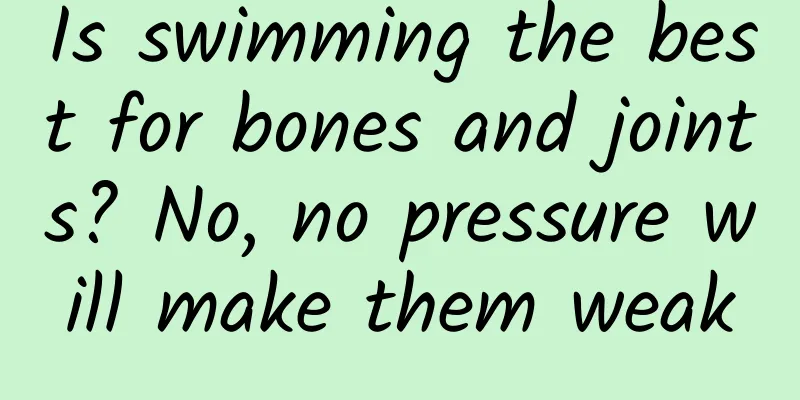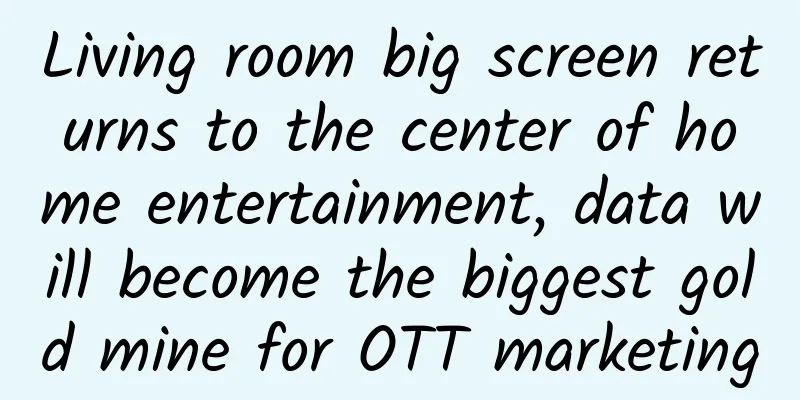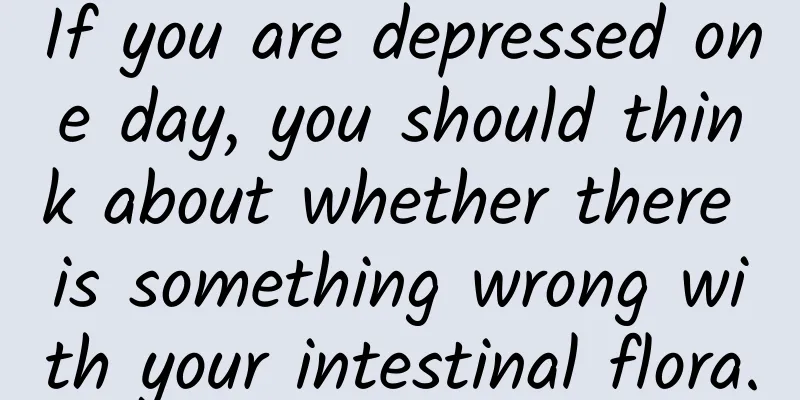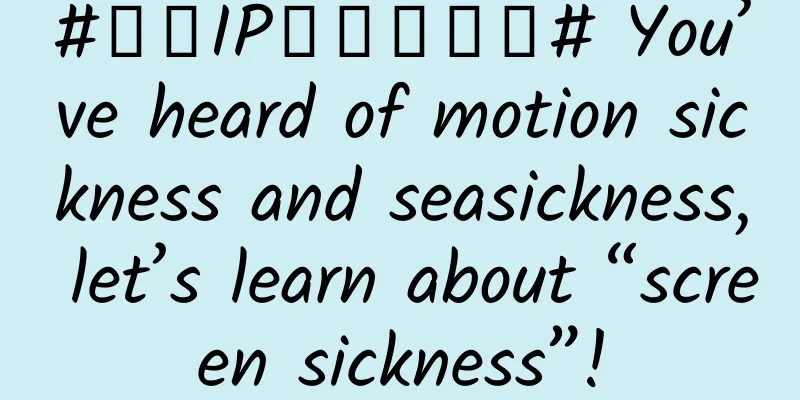Is swimming the best for bones and joints? No, no pressure will make them weak

|
"You're still running? It will only hurt your bones and joints. Swimming is the best!" Indeed, sports such as swimming and cycling have less impact on the body, but not putting pressure on the bones and joints for a long time is not protection, but will make them more fragile. Too long to read Bones are constantly changing, with new bone formation and old bone resorption occurring throughout life. Proper exercise is good for bone health and reduces the risk of fractures Exercises that are high impact and bear the weight of the bones are more effective Weigh the risks and proceed step by step Bones "dissolve" every day No increase, no reduction Looking at the fossil bones in museums that have remained unchanged for hundreds of millions of years and the bones of animals preserved in the wild for many years, many people mistakenly believe that bones will not change after adulthood. In fact, in the living body, new bones are formed and old bones are absorbed every day, and the shape and density of bones can change. Bones always have the potential to "deform" so that people can better adapt to the environment. For example, if you go from school to the fire department, you change from sitting and studying to regular weight-bearing running, and your bones will gradually become stronger to prevent fractures. If you change from being a firefighter to teaching swimming many years later and no longer do weight-bearing training on land, your bones will reduce their own weight, allowing you to move more easily in the water. Osteoblasts migrate under pressure, secrete collagen fibers, mineralize into calcium phosphate crystals, form new bone, and increase bone diameter and strength | References [1] An extreme example of not bearing any weight at all is astronauts who stay in space for a long time. Due to the weightlessness, the pressure on the bones is significantly reduced, and the bone mass will decrease by about 1.5% per month. A more common situation is that if one foot is injured and cannot touch the ground, after a few months of using crutches, there will be a significant difference in the bone density and cortical thickness of the two legs [2-4]. If the stress on bones does not change much throughout life, the natural change pattern of bone density is: rapid growth during childhood and adolescence, peaking at around 30 years old, relatively stable during middle age, and then rapidly declining[5]. If bone density drops too low, osteoporosis will occur, making it easy to fracture in a collision, and even one's own weight can cause spinal compression fractures[6]. However, this bone loss associated with aging is difficult to avoid, and the best way to prevent osteoporosis and fractures is to accumulate a higher peak value when you are young and try to maintain it [5]. Exercise has the potential to increase peak Slow down the decline Apart from genes and age, which cannot be changed, bone strength is most closely related to diet and exercise. In terms of diet, appropriate intake of relevant nutrients can provide the raw materials for strengthening bones, such as calcium, vitamin D and protein [5]. Exercise, on the other hand, encourages the body to use these raw materials to strengthen bones. Appropriate exercise is beneficial to bones at any stage of life, but the strongest effect is from adolescence to early adulthood. Even if you do not exercise, your bone mass will naturally increase during this period, but appropriate exercise can increase your bone mass by 1% to 6% compared to your peers, resulting in better bone structure and higher peak bone mass, allowing you to retain more bone mass in middle-aged and elderly people [1, 7]. Exercise in adulthood helps offset the decline in bone health caused by aging, maintaining or even improving bone density. In addition, exercise improves the ability to control the body, and the elderly can reduce the risk of fractures by 40% to 60% through proper exercise. A few days ago, Chinese astronauts entered their own space station for the first time. A training area was specially set up in the Tianhe core module to facilitate the astronauts to maintain skeletal and muscular health through exercise. Bone mass increases and decreases with age, proper exercise helps retain more bone mass | ojaihealth The pressure is high enough To stimulate new bone growth However, not all sports can stimulate bone growth. Professional cyclists and swimmers usually have lower bone mass than other athletes, or even lower bone mass than ordinary people. On the other hand, volleyball and football players generally have higher bone mass (differences between sports are also affected by diet) [5]. This is because the body considers it necessary to form new bone only when the stress on the bones is continuously above a certain value. This threshold is about one-tenth of the force that causes a fracture. There are two main types of exercise that can cause stress to exceed the threshold: high-impact exercise, such as jumping, running, and playing basketball; and exercise that requires strong muscle contraction while bearing the load on the bones, such as squats, deadlifts, and presses [1, 7]. Specifically, if healthy people only exercise by walking, cycling or swimming, the effect of preventing osteoporosis and fractures is relatively poor. While retaining these exercises, you can gradually insert short brisk walking or jogging, add jumping or squatting movements, and increase strength training to enhance the effect of exercise in maintaining bone health[8]. If exercise is appropriate and repeated several times, the markers in the body that stimulate bone growth will increase, but it usually takes half a year for the bones to undergo significant changes, and bone density will decrease rapidly after stopping exercise [1]. In addition, bones only become stronger in the area and direction that bears stress, so the load needs to be applied to the part that you want to strengthen. For example, running can increase the bone density of the femur in the thigh, but it has little effect on the wrist, while tennis players have significantly more bone mass in their main hand than in their other hand[4]. Since the hip and waist are more susceptible to fractures due to osteoporosis, sports that involve multiple joints, the spine, and the hips bearing stress have a stronger protective effect. For example, weighted squats are more effective in strengthening bones than seated leg extensions[1]. In addition to the location, frequently changing the direction of exercise will make the bones stronger in all aspects. The effect of weighted squats on strengthening bones is better than the seated leg extension training with fixed equipment on the right | wikimedia Aerobic exercise strengthens bones Running or jumping > Walking or elliptical trainer > Cycling or swimming (upright body, strong impact resistance) Strength training strengthens bones Movements involving multiple joints, bearing the weight of the spine and hip > Movements involving a single joint, assisted by fixed devices [1] Common characteristics: high load and strong effect, need to gradually increase the intensity and change the stimulation method The greater the potential gain, the greater the risk The best one for you Within a certain range, the greater the pressure brought by exercise, the stronger the effect of stimulating bone strengthening. However, if the pressure exceeds the tolerance of bones, it will cause damage, which may cause fractures on the spot or stress fractures after repeated repetitions. In addition, other tissues such as cartilage, ligaments and muscles may not have the same resistance as bones, and they may be damaged while strengthening bones. If your bones are fragile, such as if you have osteoporosis, you can prevent fractures by strengthening your muscles and bones through exercise. However, you should consult your doctor before starting and choose the right exercise for your individual situation. You may need to avoid running, jumping, and movements that bend and twist the spine, such as golf and tennis [9-11]. Protecting joint cartilage is an important reason for many people to avoid impact sports. In fact, joint flexion and extension and weight bearing are beneficial for cartilage to obtain nutrients from synovial fluid, while long-term immobility is not conducive to cartilage health [1, 7]. Even if osteoarthritis has been diagnosed, appropriate exercise can help relieve pain and improve quality of life [7, 12-14]. As for the upper limit, since each person's cartilage structure and resistance are different, and it is impossible to conduct destructive tests on humans, there is currently no specific recommendation on the limit of exercise. In short, for healthy people of all ages, they should not only do "stress-free" exercise. A certain load is beneficial to bone strengthening, but the process of introducing new exercises needs to be done slowly and take into account the individual's weight, muscle strength, flexibility, and ability to control movements. People who have already had bone and joint injuries need to consult a doctor first and choose a safe and effective exercise method under professional guidance [15]. References [1] National Strength and Conditioning Association; G. Gregory Haff, N. Travis Triplett, editors. Essentials of Strength Training and Conditioning, 4th ed. 2016. [2] Smith JK. Osteoclasts and Microgravity. Life (Basel). 2020;10(9):207. [3] Stavnichuk M, Mikolajewicz N, Corlett T, Morris M, Komarova SV. A systematic review and meta-analysis of bone loss in space travelers. NPJ Microgravity. 2020;6:13. [4] Rolvien T, Amling M. Disuse Osteoporosis: Clinical and Mechanistic Insights. Calcif Tissue Int. 2021 Mar 18. Epub ahead of print. [5] Sale C, Elliott-Sale KJ. Nutrition and Athlete Bone Health. Sports Med. 2019;49(Suppl 2):139-151. [6] Hutson MJ, O'Donnell E, Brooke-Wavell K, Sale C, Blagrove RC. Effects of Low Energy Availability on Bone Health in Endurance Athletes and High-Impact Exercise as A Potential Countermeasure: A Narrative Review. Sports Med. 2021;51(3):391-403. [7] The Physical Activity Guidelines for Americans. JAMA. 2018;320(19):2020–2028. [8] https://www.mayoclinic.org/walking-for-muscle-and-bone-health/art-20457588 [9] Chinese Medical Association, Chinese Medical Association Journal, Chinese Medical Association General Practice Branch, Chinese Medical Association "Chinese Journal of General Practitioners" Editorial Committee, Endocrine System Disease Primary Care Diagnosis and Treatment Guidelines Writing Expert Group. Primary Care Diagnosis and Treatment Guidelines for Primary Osteoporosis (Practical Edition, 2019). Chinese Journal of General Practitioners. 2020,19(4):316-323. [10] Chinese Rheumatology and Immunology Expert Group. Practice Guidelines for Patients with Osteoporosis. Chinese Journal of Internal Medicine. 2020.59(12):953-959. [11] https://www.mayoclinic.org/diseases-conditions/osteoporosis/in-depth/osteoporosis/art-20044989 [12] National Clinical Research Center for Geriatric Diseases, Chinese Medical Association Orthopedics Branch, Joint Surgery Group. Chinese Guidelines for the Diagnosis and Treatment of Patellofemoral Osteoarthritis (2020 Edition). Chinese Journal of Orthopaedics. 2020.40(18):1227-1234. [13] Chinese Medical Association Orthopaedics Branch, Joint Surgery Group. Guidelines for the diagnosis and treatment of osteoarthritis (2018 edition). Chinese Journal of Orthopaedics. 2018;38(12):705-715. [14] National Nursing Experts Collaborative Group for Chronic Disease Management of Rheumatology and Immunology. Expert recommendations for chronic disease management of osteoarthritis. Source: Chinese Journal of Rheumatology. 2020, 24(4): 221-225. [15] https://www.mayoclinic.org/medical-professionals/endocrinology/news/mayo-clinic-healthy-living-program-for-optimization-of-bone-health/mac-20484964 Author: Dai Tianyi Editor: odette |
<<: A ghost in the water and a flower ended the two thousand years of atomic debate
>>: Another national treasure! China's first space telescope - CSST is here
Recommend
Why does Taobao require us to play games?
After ten years of exploration, the growth of Tma...
The elderly have become the biggest victims of the Internet age! Who will deal with the chaos of big data?
Every year, March 15 brings us many unexpected th...
iOS 17 is updated again, and the official version release time is confirmed
Early this morning, Apple released the iOS 17 Bet...
Even 8G of memory can’t support it, why is Android killing background processes more and more serious? How much memory is enough?
[[376707]] The Android system has now entered the...
Tourism promotion, how does Qingyuan Tourism Company conduct online promotion?
As people's living standards continue to impr...
Xi'an high-end catwalk selection is arranged throughout the city, recommending exciting projects that you have never experienced, 100% of repeat customers like it immediately
Xi'an high-end T-stage elections are arranged ...
APICloud is the first in the world to perfectly adapt to iOS8
Currently, iOS 8 is still in the DP1 stage, which...
Ideal Auto official: It will take only 47 months for Ideal Auto's 500,000th mass-produced car to roll off the assembly line in September 2023
According to Li Auto, Li Auto's 500,000th mas...
How much does it cost to develop the Huangshi check-in mini program?
How much does it cost to join a Huangshi sign-in ...
How much does it cost to join the Liling home improvement mini program? What is the price for joining the Liling home improvement mini program?
How much does it cost to join a home improvement ...
Be aware that feeling tired for no reason may be a sign of illness!
Some people are full of energy every day, while o...
3 counter-common sense points in channel cooperation
Recently, I met with several newly appointed pres...
Why do your glasses reflect light when you take photos?
Produced by: Science Popularization China Produce...
Stop swallowing pills! These pills can also be chewed
Author: Huang Yanhong Duan Yuechu In daily life, ...
The diary of starting an account from 0 to 50,000 followers, the experience of starting an account and the logic of monetization
Diary of starting an account from 0 to 50,000 fol...









